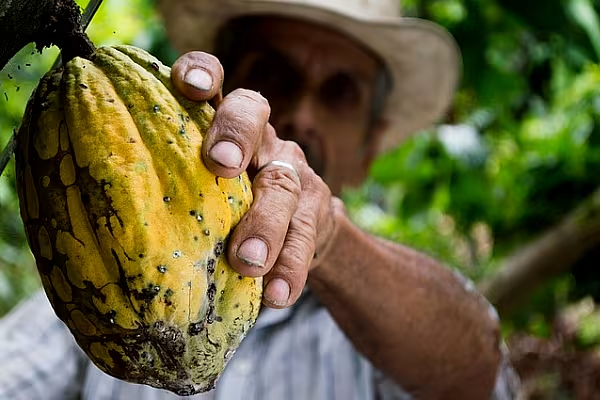Adverse weather in West Africa could see cocoa output in Ghana, the world's second largest producer, fall short of consensus for a second year running, local traders and exporters told Reuters.
Cocoa futures on ICE are near their highest in three years, driven in part by overly dry, hot winds, which have also damaged the crop in neighbouring Ivory Coast, the world's top cocoa producer.
Four local traders and exporters, speaking on condition of anonymity, said they see the 2019/20 Ghanaian crop at 790,000-820,000 tonnes, a shortfall that if realised could help drive global prices higher. It is well short of an 875,000 consensus forecast in a Reuters poll in late January.
Dry Weather
A source at Ghanaian cocoa regulator Cocobod said the weather is a major concern but declined to discuss numbers.
"It has not been raining for more than four months and the heat is so strong there are very few flowers, cherelles (young cocoa pods) and pods in the fields," said an Accra-based exporter.
In 2018/19, Ghanaian cocoa output totalled 815,000 tonnes, according to the International Cocoa Organisation, far below the international body's initial projection of 900,000 tonnes issued in February 2019.
The ICCO is expected to publish its first projections for 2019/20 crops later this month.
Some analysts question the extent to which this season's Ghanaian crop will miss consensus forecasts.
"People have been reducing their numbers but not by 50,000 tonnes. Arrivals so far have been quite good and at this stage, (there's only) the mid crop and tail-end of the main crop (left)," an analyst at a major chocolate maker said.
Cocoa arrivals at Ghanaian ports stood at 596,000 tonnes from 1 October 2019 - the start of the season - until 16 January 2020, up from 591,000 tonnes the same period of the previous season, official figures show.
But local exporters are concerned.
'Production Will Disappoint'
The director of a European company based in Accra said production will disappoint as the recent dry spell has reduced the crop. "We (have been) forced to lower our predictions," he said.
Ghana and Ivory Coast produce more than 60% of the world's cocoa.
Both countries' output has been hit by the weather, but the situation in Ivory Coast is more severe as farmers and middlemen there have been hoarding in anticipation of higher prices next season, a Europe-based trader said.
Ivory Coast and Ghana have introduced a $400 (€370.48) a tonne living income differential or premium for their 2020/21 cocoa sales in a bid to guarantee higher prices for farmers and combat pervasive poverty.
It is difficult to hoard in Ghana as the market is so tightly controlled by the government, the Europe-based trader said.
News by Reuters, edited by ESM. Click subscribe to sign up to ESM: European Supermarket Magazine.














